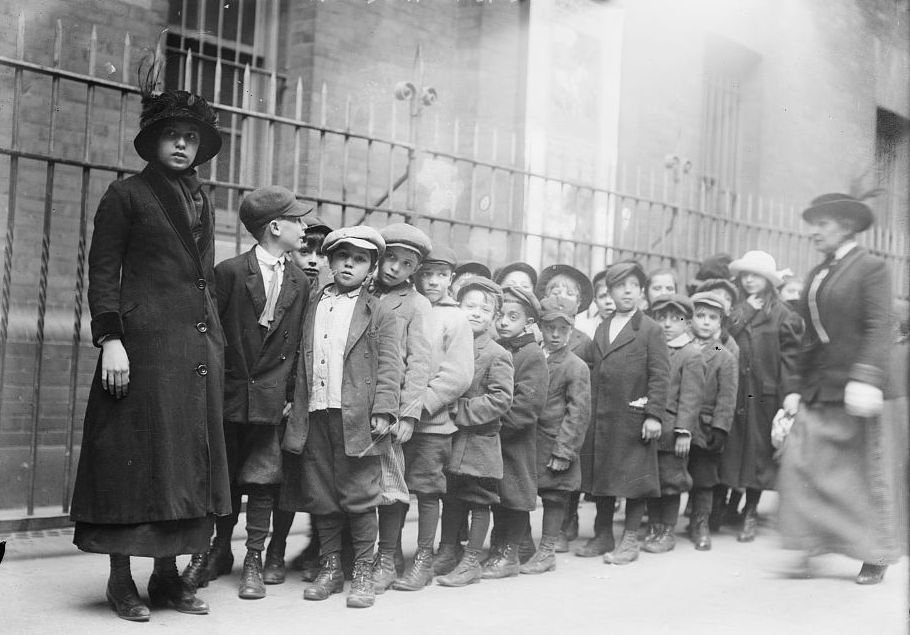Also known as the Master of the Orphan Chamber (MOOC), The Board of Orphan Masters was established at the Cape about 1673. In the following year we read in the Government Journal of monies of the Cape Orphans being administered by the Diaconate or Poor Fund and a proposal to separate such monies and place them with the Orphan Chamber. (Journal 9/10/1674)
A few months later the Journal records that “the Board of Orphan Masters, already created last year, shall be increased by a Company’s servant, so that it will consist of five members, besides a burgher to be appointed as Secretary”. (Ibid 13/12/1674, Tennant in his “Notar’s Manual” says the Chamber was established in 1691. By a letter, 28/9/1675, from the Seventeen to the Cape the establishment of this Chamber was approved)
Two of the members were chosen from the members of the Court of Justice and two from the Burgher Councillors. Not long after the Board consisted of a President, Vice-President, drawn from the Company and burghers respectively, two Company members and two burgher members. A nomination of names was sent in every two years for Government to select from. The office of President and Vice-President was made permanent in the days of the Batavian Government. (Provisioneele Instructie voor de Weeskamer, art 1) After 1806 the appointments were not made with reference to any particular principle. From this date to 1828 the Presidency was held by the President of the Court of Justice.
 The Orphan Chamber originated through the early necessity of making provision for the collection and administration of the property of persons who died intestate and left heirs absent from the Colony or were under age and therefore unable to take the duty upon themselves. Property of persons who died on the voyage to and from Europe and found on board was subject to its jurisdiction. By a letter of the 30th March, 1711, the Cape Government was advised that the Chamber was not to be burdened with deceased estates of Company’s servants and burghers who had died on the outward or homeward- bound voyage, except those who were on the paysheets ashore. Its principal duties were: (Vide Treatise for His Majesty’s Commissioners of Enquiry)
The Orphan Chamber originated through the early necessity of making provision for the collection and administration of the property of persons who died intestate and left heirs absent from the Colony or were under age and therefore unable to take the duty upon themselves. Property of persons who died on the voyage to and from Europe and found on board was subject to its jurisdiction. By a letter of the 30th March, 1711, the Cape Government was advised that the Chamber was not to be burdened with deceased estates of Company’s servants and burghers who had died on the outward or homeward- bound voyage, except those who were on the paysheets ashore. Its principal duties were: (Vide Treatise for His Majesty’s Commissioners of Enquiry)
1. the administration of the estates of persons dying intestate in the Colony or on the voyage to the Colony and among whose heirs there were minors or persons residing abroad, also estates of those who had not specially excluded the Orphan Masters in their will, or had specially appointed them even where their heirs were majors and resident here;
2. the registration of wills of deceased persons;
3. administration of minors’ property;
4. receiving and paying to present and absent claimants the portions or legacies due to them; keeping a death register or record of persons who died at the Cape; recording the resolutions and transactions of the Board.
In 1714 the Government issued to the Orphan Masters a set of Rules and Regulations by which they were to be guided in carrying out their duties. (Resolutions, Council of Policy, 26/6/1714) These instructions were taken over from the Statutes of Batavia. They included a tariff of fees, which were to be charged in administering an estate. In 1793 renewed instructions were issued, compiled from the 1714 rules, from those of the Orphan Chamber at Batavia , from a sketch of instructions submitted to the Government by the Orphan Masters, and from a report relative to the improvement in the Chamber. (Annexures to Treatise for His Majesty’s Council)
Provisional Instructions were framed for the Orphan Chamber by De Mist, ( Provisioneele Instructie voor de Weeskamer ) but these show that they were evidently “framed more with a view to confirm the standing rules than to introduce new regulations” (Treatise for His Majesty’s Commission) Ordinance 104 of 1833 abolished the Orphan Chamber, and its duties were transferred to the newly appointed office of Master of the Supreme Court.
It might be of interest to note one or two of the articles of the instructions laid down. Immovable property of orphans could only be sold by an order of Court, and such property had to be put up for public auction and sold to the highest bidder. An absent minor, out of the country for sixteen years, could be publicly summoned at his last-known place of residence if it was uncertain whether he was alive or dead. If it could not be ascertained what had happened to him, his heirs could receive his property upon giving security de restituendo.
Persons had to obey a summons to appear before the Masters as if it had emanated from a Court, and upon a third default to appear they could be brought before the Court of Justice. From the resolutions sent from time to time by the Government to the Board and the instructions framed in 1793, it would appear that the Orphan Masters were given nearly the same portion of authority and jurisdiction in testamentary matters as was exercised in earlier periods by the spiritual Courts in England .
(Report of Commissioners of Enquiry on Court Justice. Theal’s “Records of Cape Colony” 28.110) The Annexures to the liquidation and distribution accounts of the Orphan Chamber form one of the most important series of the collection, as they contain very useful material for a social and economic history of the Cape in the early days. They contain private ledgers, correspondence, memo books, paid accounts, business transactions of deceased persons. All the records of the Chamber are, as a matter of fact, of great value, which cannot be overestimated. The greater portion of the records of this Chamber was transferred in 1912 from the Master’s Office.
Wills, 1689-1833
Instructions to the Orphan Chamber issued in 1793 provided that “all wills shall be exhibited to Orphan Masters in order to be registered”. Ordinance 104 of 1833 laid down that on a testator’s death his will was to be transmitted to the Master of the Supreme Court. Up to 1833 certified copies were filed in the Orphan Chamber. The originals of the latter copies will be found filed amongst the records of the Court of Justice, q.v.
Inventories, 1673-1834
Resolutions, 1758-1833 (incomplete)
Of the several duties of the Secretary, one was to keep a record of the proceedings and resolutions of the Orphan Chamber. Before 1758 the resolutions were kept on loose sheets and signed by the Secretary. Towards the end of 1757 it was resolved that the proceedings were to be entered in a bound volume and signed by all the members.
Liquidation and Distribution Accounts, 1709-1835
When Orphan Masters were nominated as executors of an estate or were not specifically excluded by the will, or the deceased died intestate, they took control of the effects of the estate. They took the necessary steps to liquidate the estate, framed a liquidation and distribution account of their administration, and, after paying out the creditors, awarded the residue to the heirs. Executors testamentary, other than the Masters, were not called upon to render an account to the Chamber, except when the latter had not been excluded from interference.
Vendu Rolls, 1691-1834
There were no licensed auctioneers during the eighteenth century; the right of holding public sales was entrusted to certain Government officials, amongst which was the Secretary to the Orphan Chamber. A complete list or vendu roll was kept of the articles sold, name of purchaser, and price paid. These vendu rolls refer to articles and property sold in deceased estates, and give a good idea of prices at auction.
Death Registers, 1758-1833
In 1711 the Orphan Masters saw the necessity of opening a Death Register, and requested the church authorities to order their sextons to submit to the Board the names, calling and places of burial of persons whose funerals they conducted. Notwithstanding the fact that sextons were prohibited in 1714, under forfeiture of their office, of having a grave dug without previously notifying the death to the Secretary, it seems that no beginning was made with the register. The first one extant begins in 1758, and up to 1797 the particulars given are: Name, residence, date of death and calling or occupation of deceased. After this additional details are entered, as age, birthplace, whose wife, widow, son or daughter, and at whose residence the person died.
Letters Received, 1690-1797
These include correspondence with the Orphan Chambers in Holland and Batavia and other possessions of the Company, with similar bodies in Europe and with the local government and individuals.
Letters Despatched, 1691-1880. The same note applies as under Letters Received.
Kusting Brieven, 1709-1821
These are mortgage bonds passed in favour of the Orphan Chamber on behalf of the heirs of a deceased person for the purchase price of the immovable property sold in such estate. They had to be passed before the Commissioners of the Court of Justice at one and the same time when transfer of the property specially hypothecated was executed.
Conditions of Sale, 1697-1833
Immovables in an estate were sold by public auction after the Court had given its consent and the highest bidder signed the conditions of sale and furnished two sureties.
Bewyzen, 1731-1825
The survivor of two spouses who wished to remarry and had minor children by the first marriage, had to enter into a bond or kinderbewys before the Orphan Masters, securing to such minors their inheritance from the estate of their deceased parent. Today a certificate from the Master of the Supreme Court is necessary to enable a surviving spouse to contract a second marriage.
Extracted from: Archives and Records of the Cape , Volume III by C. Graham Botha





